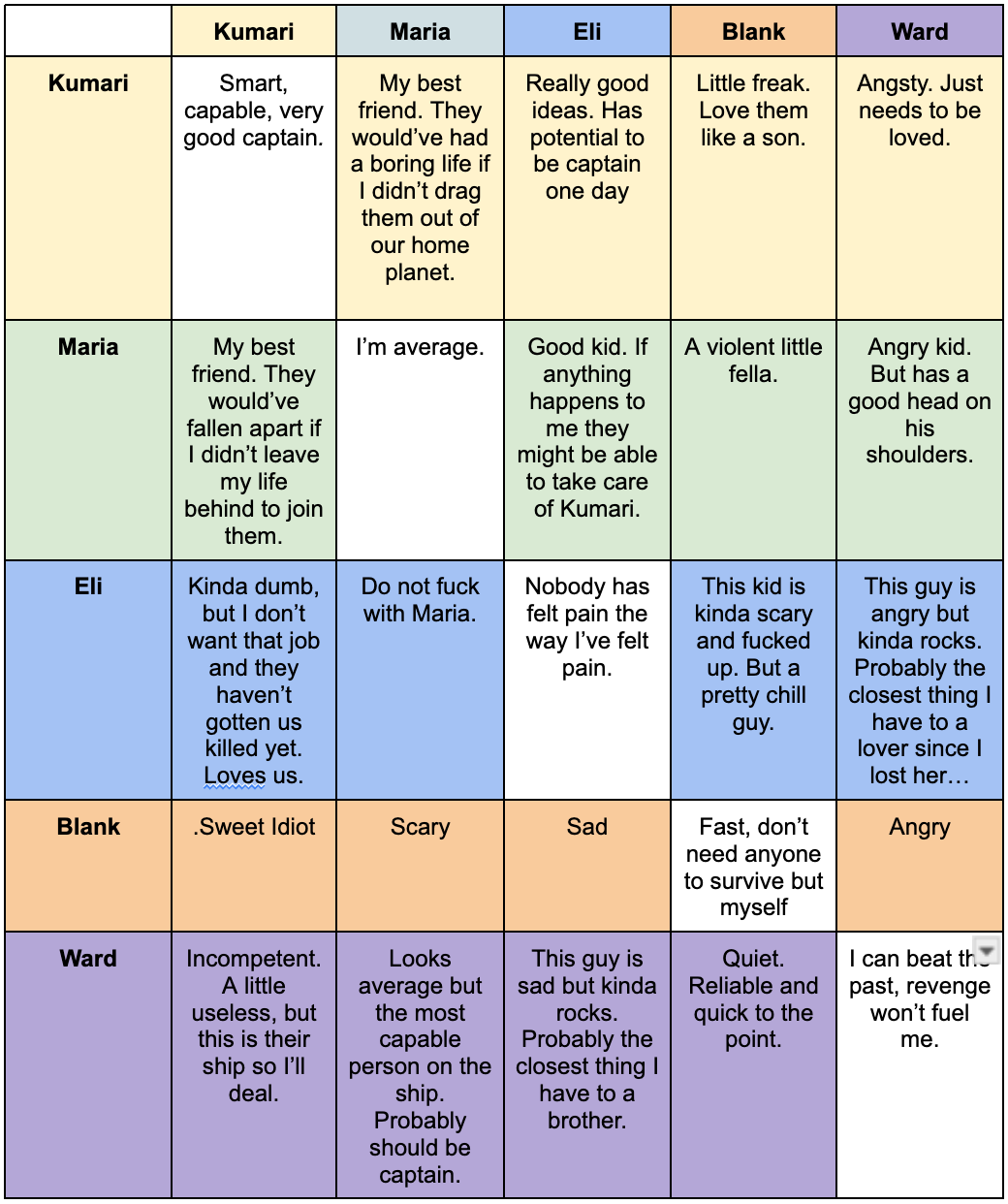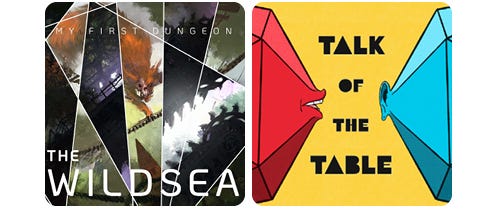This series of articles has, at times, proven to be a challenge. Not for lack of games and not for lack of interesting pages, but because of games like The Wildsea—a game that is full of so many goddamn good pages I spend an hour trying to pick just one. This article is about pages 66-67 but, as is often the case with PTGM, it is really about the whole game.
300 years from now, if you were traversing the transformed landscape of a post-apocalyptic Earth and found just these two pages, weathered with time but still readable, you would have enough to play a version of The Wildsea that we get to explore in the present. This book is an incredible example of cramming as much “game” as possible into its pages with readability and usability top of mind.
What games have you played recently that hooked you with just one page?
At its core, The Wildsea is a game about sailing atop a world covered by a sea of overgrown trees. On this particular spread, you are given that core gameplay loop of journeying across the verdant sea. What’s more, you are given a list of 10 possible journeys to explore, journeys that range from the perfect one shot to a story hook for a full campaign.
The Seeds of Adventure: Writing by Felix Isaacs
Reading The Wildsea is like planting seeds in your brain that grow into stories, session plans, and your own version of the world Felix Isaacs has created. One of the most potent kinds of seed within are the bits of in-world fiction like the text on p. 67. Felix has given readers a piece of worldbuilding, a glimpse at some lore of the world, and an example of what it feels like to play the game. You’ll find these throughout the text, hinting at different elements of play while being a joy to read.
Seeing is Believing: Artwork by Pierre Demet
A world as weird as The Wildsea can be difficult to imagine, many of us trapped in our assumptions of “standard” fantasy and exploration. The Mythworks team has brought in a team of incredible artists to bring this world to life throughout. To set the tone of a chapter like “Journeys” is a challenge that Pierre Demet met with force. The piece on page 66 has a whole story within. As a player, I want to encounter this bug leviathan. As a Firefly, I’m already building the story of this creature and its relationship to the people riding atop.
From Roots to Leaves: Layout by BlueTwoDays
When I think about what I like best about strong layout design, organization of information is one of the most important elements. I’ve heard (and spoken) complaints about the unique form factor of The Wildsea core book, but with BlueTwoDays layout work, the odd size fades from notice. And if it means making room for those delightful pieces of fiction, I’m not mad at it one bit.
Like the world within, there are layers to the discoveries you will find in reading through this game. I hope this small preview inspires you to set sail on the verdant waves and see for yourself.
— Elliot
DISCLOSURE: Mythworks is a sponsor of My First Dungeon presents: The Wildsea
Advance Your Play with Relationship Dynamics
Uh-oh, it’s Shenuque time! Hey friends I want to help make your Actual Plays better and more chaotic! And we’ll be talking about relationship building, which I’ve written about a lot—but it’s because it’s so important to any storytelling medium. Understanding your relationships with the characters around you is the bread and butter of a good story.
Think about a good Actual Play, TV show, movie, or book you’ve enjoyed. Think about the characters in it. Can you tell me what their relationship dynamics were like right off the bat? Did you know how they felt about the other important characters? Do you know how each character felt about themselves? If the answers to those questions are yes, then you experienced one of the subtlest tricks in telling a good story: “well-defined” character dynamics.
Why do good relationships lead to good stories? Because they provide the building blocks to advance a larger plot. A clear relationship leads to a good joke, sincere moment, or real stakes for those characters. If you’re playing a character that’s in love with another character, seeing them go on a date with someone else creates immediate stakes. A clear relationship dynamic allows you to play to the truth and gives the audience something they can invest in, and in an actual play, gives your GM a place to help build a satisfying story for your character arc.
What are some ways that you can clearly define these relationships? The good news is if you’re creating an Actual Play, most games have questions for you to ask yourself and others to help you define relationships. A lot of session zeroes have built-in questions that will force you and your fellow players to define your relationships to each other. Which member of the crew doesn’t trust you, and why? To whom do you owe a debt, and do you actually plan to repay it? Who here makes you feel safest, for better or worse? However, many times you may not be able to get a clear understanding of every relationship in your game. While this can sometimes be alleviated in the next session or can be naturally teased out when the game begins, I would recommend people getting aligned before your first recording.
While you can do this off-mic without pen and paper by just hopping on the phone or chatting on Discord, what I would recommend is that your GM, Producer, or even an eager cast member should create a Character Relationship Map.
A Character Relationship Map is something I learned about when I was learning how to write television pilots (thank you, Matt Starr). A character relationship map defines all the main relationships in your story. So if you’re doing an Actual Play with 6 main characters, you would make a 6x6 table to write out the relationship everyone has with each other. To help you visualize this, I made a character relationship map for our Orbital Blues Season.
As you can see from the table, each character's relationship to themselves and their fellow characters is defined in a way that encapsulates their dynamic. Blank’s are notably short, as the character was quick and communicated in short texts. Ward and Eli’s relationship is fun, as they both seemed to grow fond of each other but had a hard time admitting it. Meanwhile, Kumari is a bit disillusioned in the way they believe they’re perceived.
There are so many ways you can define your relationships in-game, and this is just one potential tool. But if it’s helpful, please use it in the production of your Actual Plays! A little secret about my chaos: I plan it out pretty meticulously.
— Shenuque
🗞️ News Worthy
Cynthia Williams, president of WotC and Hasbro, steps down after two years.
Astroprisma, a solo sci-fi RPG, raises $410,000 on Kickstarter
Participate in Dr. Emily Friedman’s research study “Tabletop Roleplaying Games: Labor, Ownership, and Authorship”
🎲 What We’re Bringing to The Table
🎥 Watch: RPGeeks - Orbital Blues: Blackstar
📚 Read: The Lego D&D Special is Pure Marketing, But At Least It’s Good Marketing
🎧 Listen: Never Post - How the “Megadungeon” is a productive model for understanding the internet










convinced me to pick up Wildsea next!!